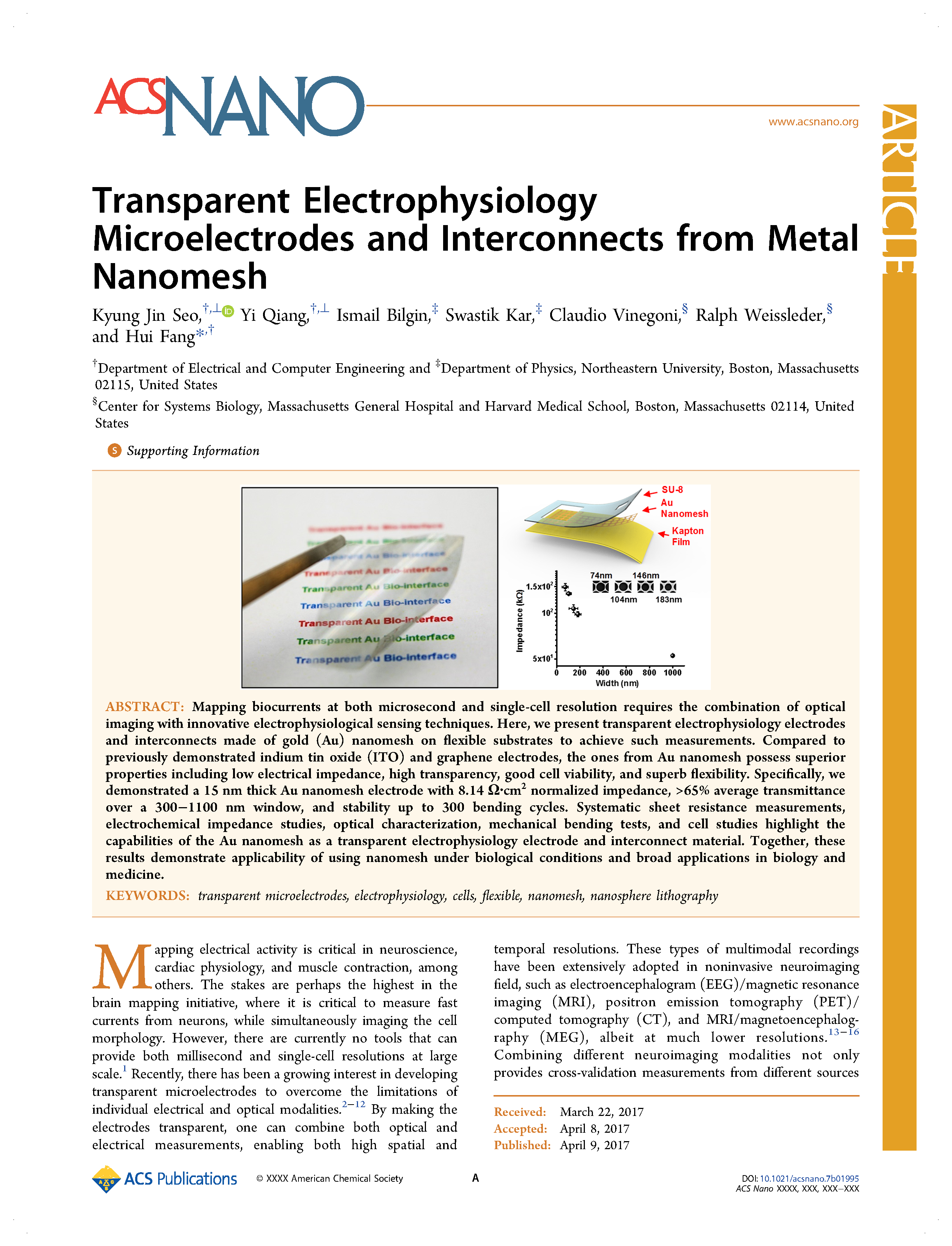Transparent Electrophysiology Microelectrodes and Interconnects from Meta Nanomesh
Acs Nano
Abstract
"Mapping biocurrents at both microsecond and single-cell resolution requires the combination of optical imaging with innovative electrophysiological sensing techniques. Here, we present transparent electrophysiology electrodes and interconnects made of gold (Au) nanomesh on flexible substrates to achieve such measurements. Compared to previously demonstrated indium tin oxide (ITO) and graphene electrodes, the ones from Au nanomesh possess superior properties including low electrical impedance, high transparency, good cell viability, and superb flexibility. Specifically, we demonstrated a 15 nm thick Au nanomesh electrode with 8.14 Omega.cm(2) normalized impedance, >65% average transmittance over a 300-1100 nm window, and stability up to 300 bending cycles. Systematic sheet resistance measurements, electrochemical impedance studies, optical characterization, mechanical bending tests, and cell studies highlight the capabilities of the Au nanomesh as a transparent electrophysiology electrode and interconnect material. Together, these results demonstrate applicability of using nanomesh under biological conditions and broad applications in biology and medicine."
Full citation
For attribution in academic contexts, please cite this work as:
| Seo, K. J., Qiang, Y., Bilgin, I., Kar, S., Vinegoni, C., Weissleder, R., & Fang#, H. (2017). Transparent Electrophysiology Microelectrodes and Interconnects from Meta Nanomesh. Acs Nano, 11(4), 4365–4372. https://doi.org/10.1021/acsnano.7b01995 |

Seo, K. J., Qiang, Y., Bilgin, I., Kar, S., Vinegoni, C., Weissleder, R., & Fang#, H. (2017). Transparent Electrophysiology Microelectrodes and Interconnects from Meta Nanomesh. Acs Nano, 11(4), 4365–4372. https://doi.org/10.1021/acsnano.7b01995